Best Substitutes For Shortening In Baking
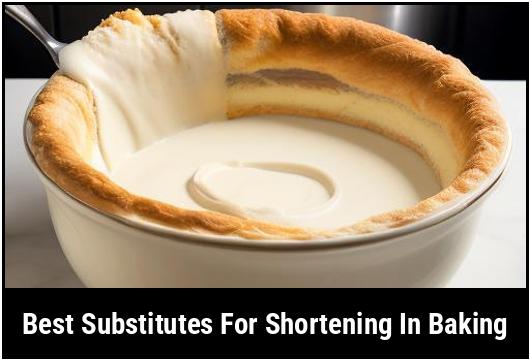
Shortening is a type of solid fat that is commonly used in baking to create a tender and flaky texture in various pastries and desserts. However, there may be instances where you find yourself out of shortening or simply prefer to use a healthier alternative. Fortunately, there are several substitutes available that can produce similar results in your baked goods. In this article, we will explore the best substitutes for shortening in baking and provide tips on how to use them effectively.
Key Takeaways
- Shortening is a solid fat commonly used in baking to create a tender and flaky texture.
- There are several substitutes for shortening that can produce similar results in baked goods.
- When choosing a substitute for shortening, consider the flavor, texture, and nutritional properties of the alternative.
- Butter, coconut oil, and lard are some of the best substitutes for shortening in baking.
- It is important to adjust the amount and temperature of the substitute to achieve the desired results in your recipes.
Why You Need A Substitute For Shortening In Baking
There are a few reasons why you might need a substitute for shortening in your baking endeavors.
-
Lack of Availability: Shortening may not be readily available in certain regions or stores. It can also be expensive or come in inconveniently large packages for occasional bakers.
-
Health Concerns: Shortening is made from hydrogenated vegetable oils, which contain trans fats. These fats have been linked to an increased risk of heart disease and other health issues. Using a healthier alternative can be a better choice for those conscious about their health.
-
Flavor Preference: Some individuals may not enjoy the taste of shortening or prefer the flavor that alternatives can bring to their baked goods.
Types Of Substitutes For Shortening In Baking
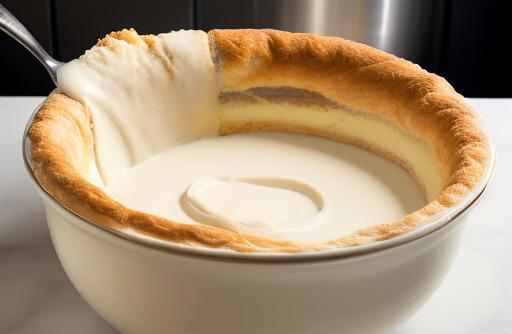
There are several substitutes for shortening that can be used in baking. The choice of substitute largely depends on your desired flavor, texture, and nutritional properties. Here are some popular options:
-
Butter: Butter is a common and versatile substitute for shortening in baking. It adds a rich flavor and a moist texture to your baked goods. However, keep in mind that butter contains more water than shortening, which may result in slightly different texture in your final product.
-
Coconut Oil: Coconut oil is a great substitute for shortening, especially in recipes that call for a tropical flavor. It has a high melting point, which helps create flaky textures in pastries. Additionally, coconut oil is a plant-based alternative and is suitable for those following a vegan or dairy-free lifestyle.
-
Lard: Lard, made from rendered pork fat, is a traditional substitute for shortening. It adds a savory flavor and a flaky texture to pies and pastries. While lard is not suitable for vegetarians or those adhering to a plant-based diet, it is an excellent choice for individuals looking for a closer flavor profile to shortening.
-
Vegetable Oil: Vegetable oil, such as canola or sunflower oil, can be used as a substitute for shortening in some recipes. However, it is important to note that the texture and flavor of your baked goods may differ slightly from using shortening. Adjustments to the recipe may be necessary.
Best Substitutes For Shortening In Baking
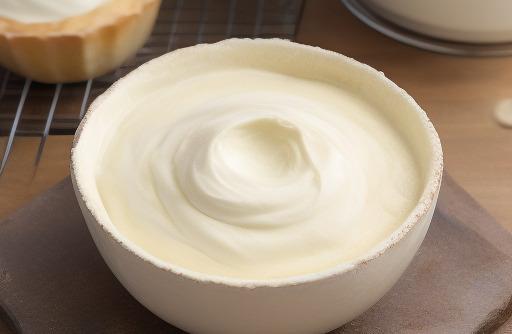
Now let’s dive into the details of the best substitutes for shortening in baking and understand how they can be utilized effectively.
1. Butter
Butter is one of the most popular substitutes for shortening in baking. It adds a rich flavor and moisture to your baked goods. When using butter as a substitute, keep in mind that it contains more water than shortening. This higher water content can affect the texture of your final product, making it slightly more tender and less flaky.
To replace shortening with butter in your recipe, use a 1:1 ratio by weight. For example, if your recipe calls for ½ cup of shortening, use ½ cup of butter instead. Make sure the butter is softened to room temperature before incorporating it into your batter or dough. Cream the butter with the sugar to ensure thorough blending.
Pro Tip: If you want to achieve a similar texture to using shortening, you can chill the butter before incorporating it into your recipe. This will help the butter solidify faster during the baking process, resulting in a flakier texture.
2. Coconut Oil
Coconut oil is a versatile substitute for shortening in baking, especially in recipes that call for a tropical flavor. It has a high melting point, similar to shortening, which makes it an excellent choice for creating flaky textures in pastries. Additionally, coconut oil can be used as a plant-based alternative for those following a vegan or dairy-free lifestyle.
To substitute coconut oil for shortening, use a 1:1 ratio. If your recipe calls for ¼ cup of shortening, use ¼ cup of coconut oil instead. Keep in mind that coconut oil has a distinct flavor that can enhance the taste of your baked goods. If you prefer a milder coconut flavor, use refined coconut oil.
Pro Tip: If the recipe calls for solid shortening, simply melt the coconut oil and let it cool slightly before incorporating it into your batter or dough. This will ensure that the temperature remains consistent and does not affect the overall texture of your final product.
3. Lard
Lard, made from rendered pork fat, is a traditional substitute for shortening in baking. It adds a savory flavor and a flaky texture to pies and pastries. However, lard is not suitable for vegetarians or those following a plant-based diet.
To replace shortening with lard in your recipe, use a 1:1 ratio. For example, if your recipe calls for ⅓ cup of shortening, use ⅓ cup of lard instead. Like shortening, lard is solid at room temperature, so there is no need to adjust the consistency of the fat when substituting.
Pro Tip: When using lard as a substitute, ensure that it is fresh and of high quality. The flavor of lard can vary depending on how it was rendered and processed. Look for a reliable source and choose a lard that is free from any off-putting odors or flavors.
4. Vegetable Oil
Vegetable oil, such as canola or sunflower oil, can be used as a substitute for shortening in some baking recipes. However, it is important to note that the texture and flavor of your baked goods may differ slightly from using shortening.
To replace shortening with vegetable oil, use a 1:1 ratio. If your recipe calls for ½ cup of shortening, use ½ cup of vegetable oil instead. Keep in mind that vegetable oil is a liquid fat, so it may affect the texture and density of your final product. Adjustments to the recipe may be necessary.
Pro Tip: If you prefer a lighter texture in your baked goods, you can consider using half shortening and half vegetable oil as a substitute. This combination can help maintain some of the tenderness of shortening while adding a lighter texture from the vegetable oil.
Choosing The Right Substitute For Shortening In Baking
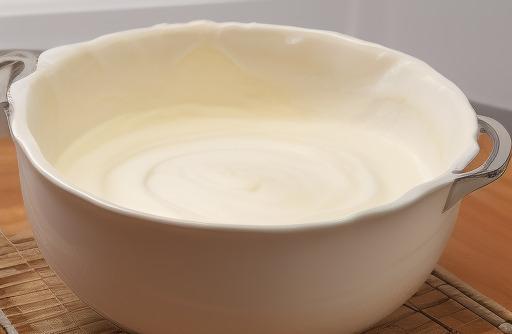
When choosing a substitute for shortening in baking, consider the flavor, texture, and nutritional properties of the alternative. Here are a few factors to keep in mind:
-
Flavor: Each substitute will impart a different flavor to your baked goods. Butter adds a rich and creamy taste, while coconut oil offers a hint of tropical flavor. Lard gives a savory touch, and vegetable oil has a neutral taste. Choose the substitute that aligns with the flavor profile you desire for your recipe.
-
Texture: Shortening is known for creating a tender and flaky texture in baked goods. When substituting, consider how the alternative will affect the texture. Butter and lard can provide similar results, while coconut oil may result in a slightly different texture due to its higher water content.
-
Nutritional Properties: Shortening is made from hydrogenated vegetable oils, which contain trans fats. If you are concerned about the health implications of trans fats, opt for a substitute that offers better nutritional properties. Butter, coconut oil, and vegetable oil are healthier alternatives to consider.
-
Allergies and Dietary Restrictions: Take into account any allergies or dietary restrictions when choosing a substitute. Coconut oil and vegetable oil are suitable for vegan and dairy-free diets, while lard is not suitable for vegetarians or those following a plant-based diet.
Consider the specific requirements of your recipe and your personal preferences when selecting the most appropriate substitute for shortening.
Cooking With Substitutes For Shortening In Baking

When using substitutes for shortening in baking, it is important to make a few adjustments to ensure successful results. Here are some tips for cooking with these substitutes:
-
Temperature: Shortening is solid at room temperature, while many substitutes are liquid or solid at different temperatures. Be mindful of the required consistency in your recipe and adjust the temperature of the substitute accordingly. For example, if using coconut oil or butter, soften them to room temperature before incorporating them into the recipe.
-
Melting Points: Consider the melting points of the substitutes. Coconut oil and butter have higher melting points, which can help create flaky textures in pastries. If you want to achieve a similar effect, ensure that the substitutes are chilled or solidified during the baking process.
-
Texture and Density: Some substitutes may alter the texture and density of your final product. This can be especially noticeable in recipes that rely heavily on the characteristics of shortening, such as pie crusts. Make adjustments to the recipe as needed, such as reducing the amount of liquid or adding additional flour to compensate for the differences.
-
Flavor Enhancement: Experiment with complementary flavors to enhance the taste of your baked goods. For example, if using coconut oil as a substitute, try adding some shredded coconut or a splash of coconut extract to enhance the tropical flavor.
Remember that baking is an art, and it might take some trial and error to find the perfect substitute and adjustments for your specific recipes.
Recipes Using Substitutes For Shortening In Baking
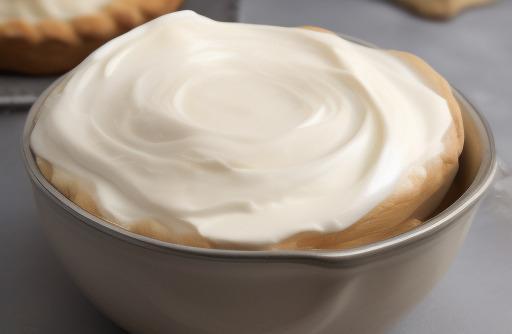
Now that you know the best substitutes for shortening in baking and how to use them, here are a few recipes to try out:
1. Classic Chocolate Chip Cookies (Using Butter)
Ingredients:
- 1 cup butter, softened
- 1 cup granulated sugar
- 1 cup brown sugar
- 2 large eggs
- 1 teaspoon vanilla extract
- 3 cups all-purpose flour
- 1 teaspoon baking soda
- 1/2 teaspoon salt
- 2 cups chocolate chips
Instructions:
- Preheat your oven to 375°F (190°C).
- In a large bowl, cream together the softened butter, granulated sugar, and brown sugar until light and fluffy.
- Beat in the eggs, one at a time, followed by the vanilla extract.
- In a separate bowl, whisk together the flour, baking soda, and salt.
- Gradually add the dry ingredients to the wet ingredients, mixing until just combined.
- Stir in the chocolate chips.
- Drop rounded tablespoonfuls of dough onto ungreased baking sheets.
- Bake for 9 to 11 minutes, or until golden brown around the edges.
- Remove from the oven and let cool on the baking sheets for a few minutes before transferring to a wire rack to cool completely.
2. Flaky Pie Crust (Using Lard)
Ingredients:
- 2 1/2 cups all-purpose flour
- 1 teaspoon salt
- 1 cup lard, chilled
- 6-8 tablespoons cold water
Instructions:
- In a large bowl, whisk together the flour and salt.
- Cut the chilled lard into small cubes and add it to the flour mixture.
- Use a pastry cutter or your fingers to cut the lard into the flour until the mixture resembles coarse crumbs.
- Add the cold water, one tablespoon at a time, and mix until the dough comes together.
- Divide the dough into two equal portions and shape each into a disk.
- Wrap the dough in plastic wrap and refrigerate for at least 1 hour before using.
- Roll out the dough on a lightly floured surface to fit your pie pan.
- Fill the pie crust with your desired filling.
- Bake according to the recipe instructions for the filling.
Feel free to adapt these recipes and experiment with different substitutes to suit your taste and preferences.
Storage And Shelf Life Of Substitutes
It is important to note that the storage and shelf life of substitutes for shortening may vary. Here are some general guidelines:
-
Butter: Store butter in the refrigerator in an airtight container for up to one month. Alternatively, you can freeze butter for longer storage, up to six months.
-
Coconut Oil: Coconut oil can be stored at room temperature, but it is best to keep it in a cool, dark place to prevent oxidation. When stored properly, coconut oil can last up to two years.
-
Lard: Store lard in the refrigerator in an airtight container for up to six months. Freezing lard can extend its shelf life to one year.
-
Vegetable Oil: Vegetable oil can be stored at room temperature in a tightly sealed container for up to one year. Keeping it away from heat and light will help maintain its quality.
Always check for any signs of rancidity or spoilage before using any stored fat substitutes. If they have an off-putting odor or flavor, it is best to discard them.
Conclusion
While shortening is a popular ingredient in baking, it can be easily substituted with other options that offer similar results. Butter, coconut oil, lard, and vegetable oil are versatile substitutes that add flavor and moisture to your baked goods. When choosing a substitute, consider the flavor, texture, and nutritional properties that best align with your preferences and recipe requirements. Adjustments may be necessary to compensate for variations in texture and density. With some experimentation and creativity, you can achieve delicious and successful baking results using substitutes for shortening.
FAQS
What Are Some Healthy Alternatives To Shortening For Baking?
Coconut oil, unsalted butter, applesauce, Greek yogurt, and mashed bananas are all healthy substitutes for shortening in baking. Coconut oil and unsalted butter can be used in equal amounts, while applesauce, Greek yogurt, and mashed bananas can be used to replace up to half of the shortening called for in a recipe.
Are There Any Substitutes For Shortening That Can Help Me Achieve A Flaky Texture In My Baked Goods?
Yes, butter and lard are both great substitutes for shortening when it comes to achieving a flaky texture. However, both of these options are high in saturated fat, so they may not be the best choice for those who are trying to limit their intake of saturated fat.
Can I Use Olive Oil As A Substitute For Shortening In Baking?
Yes, olive oil is a healthy substitute for shortening in baking. However, it is important to note that olive oil has a stronger flavor than shortening, so it may not be the best choice for all recipes. Additionally, olive oil does not work well in recipes that require the shortening to be solid at room temperature, such as pie crusts.
Can I Use Margarine As A Substitute For Shortening In Baking?
Yes, margarine can be used as a substitute for shortening in baking. However, it is important to use a margarine that is specifically designed for baking, as not all margarines are suitable for use in baked goods. Additionally, margarine tends to be higher in saturated fat than other substitutes, such as coconut oil and Greek yogurt.
How Can I Adjust My Recipe If I Don’t Have Any Shortening Or Substitutes On Hand?
If you don’t have any shortening or substitutes on hand, you can try using a combination of other ingredients to achieve a similar effect. For example, you can usually substitute 1 cup of shortening with 1 cup of unsalted butter or ⅔ cup of vegetable oil. Additionally, you can try using alternative fats, such as nut butters or tahini, in place of shortening. However, these alternatives will likely have a noticeable impact on the flavor and texture of your baked goods.
Sources
About the Author Jenny
I'm Jenny, a housewife with an unwavering passion for food. My culinary journey began with my grandmother's kitchen, and it's now a full-fledged food blog. I've turned my love for cooking into a creative outlet, sharing recipes and stories with a global community of fellow food enthusiasts. It's proof that being a housewife can also mean pursuing your passions and savoring life's delectable moments.
